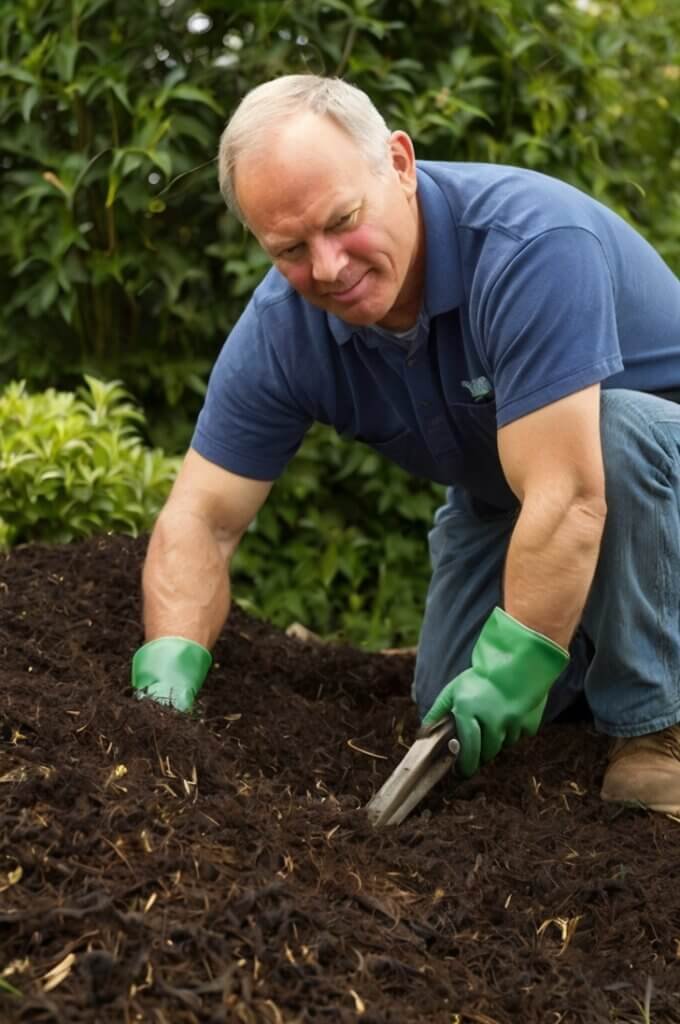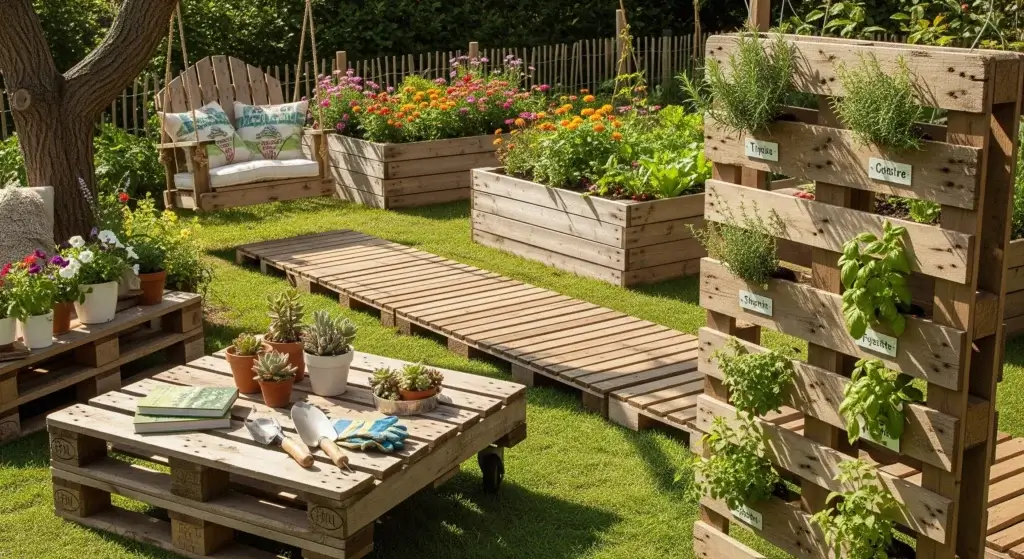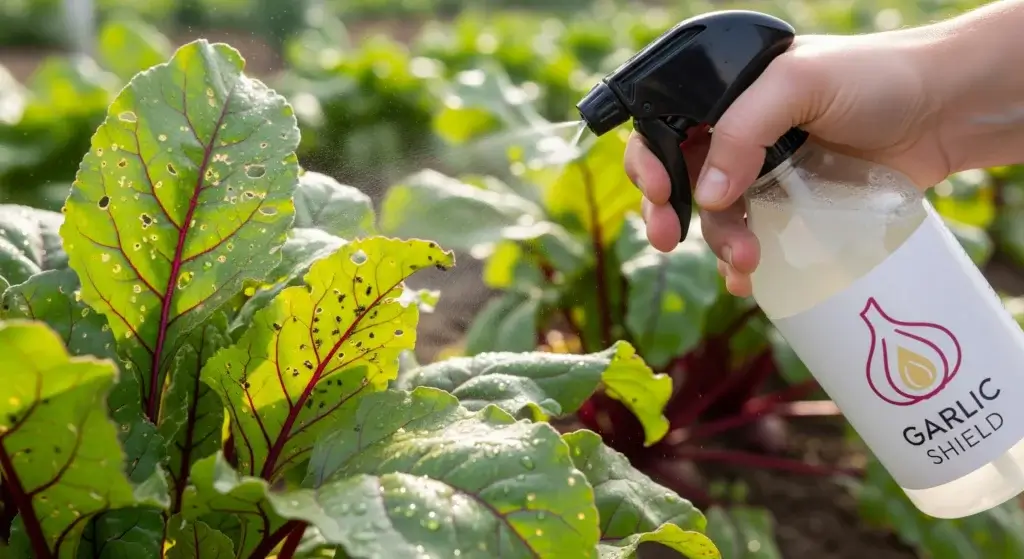
As the leaves start to change color and the air turns crisp, gardeners know that it’s time to prepare their plants for the colder months.
One of the best ways to protect your garden in fall and winter is through mulching.
Mulching is not only simple but also one of the most effective ways to ensure your plants survive the harsh weather and thrive when spring arrives.
Mulching is like giving your garden a cozy blanket!
It’s when you spread a layer of material over the soil surface.
This material can be anything from shredded leaves and wood chips to straw, compost, or even rocks.
The best type of mulch for your garden will depend on your specific needs and preferences.
How Mulching Can Improve Your Garden
Mulching not only enhances the aesthetic appeal of gardens but also provides numerous practical benefits for plant health and soil quality.
Here are the key ways mulching can improve your garden:
- Protects plants from frost: Mulch acts as insulation, keeping the soil temperature stable and protecting roots from extreme cold.
- Retains moisture: Mulch helps retain soil moisture by reducing evaporation. This is particularly valuable during hot, dry periods, as it minimizes the need for frequent watering and keeps plants hydrated.
- Suppresses weeds: By blocking sunlight from reaching the soil, mulch suppresses weed growth. This reduces competition for nutrients and water, allowing your plants to thrive without the stress of invasive weeds.
- Improves soil health: Organic mulches decompose over time, enriching the soil with nutrients and improving its structure. This organic matter enhances aeration, nutrient retention, and overall soil health.
- Prevents soil erosion: Mulch helps prevent soil erosion by reducing the impact of rain on the soil surface. It keeps rainwater from washing away valuable topsoil, preserving the integrity of your garden beds.
- Encouragement of beneficial organisms: Organic mulches attract earthworms and other beneficial organisms that improve soil health through their natural activities, such as aeration and nutrient cycling.
- Aesthetic appeal: A well-mulched garden looks neat and tidy, enhancing the overall landscape design. It can fill in empty spaces and create a polished look without requiring extensive maintenance like mowing or watering.

- Read also: DIY Vegetable Garden Box: Build Your Own Veggie Oasis
- Read also: DIY Plant Humidifier: Simple Solutions for Healthy Indoor Greenery
Potential Downsides of Fall and Winter Mulching
Too much mulch can trap excess moisture, causing root rot.
Mulch piled against plant stems can lead to rot and pest issues.
Certain mulches, like fresh wood chips, can rob soil of nitrogen as they decompose.
While mulching is a great way to protect your plants during the fall and winter, there are some potential downsides to consider.
- Rodent habitat: A thick layer of mulch can provide shelter for rodents seeking warmth during winter. This may lead to increased damage to plants as rodents might gnaw on roots or bark.
- Disease risk: Excessive mulch, particularly when piled against plant stems or trunks, can create a moist environment conducive to fungal diseases and other pathogens.
- Delayed soil warming: Too much mulch can delay soil warming in spring, potentially affecting the growth of early-emerging plants that thrive in warmer conditions.
- Labor intensity: For some gardeners, applying mulch can be labor-intensive, especially if there are many beds to cover or if heavy materials are used.
- Potential for interference with seed germination: If you have self-seeding plants, a fresh layer of mulch may interfere with their ability to germinate in spring.
Choosing the Right Garden Mulch Type
Not all mulches are created equal.
Some work better in the colder months, while others are better suited for warm seasons.
Here are some of the best mulch types for fall and winter, with a breakdown of their benefits and how to use them:
Shredded leaves
One of the best things about shredded leaves is that they are often free.
You can collect them from your yard or neighborhood during fall.
As leaves break down over time, they release valuable nutrients into the soil, improving its fertility.
Tip: Avoid using whole leaves as they can mat together, blocking air and water.
Straw
Straw is light and fluffy, creating air pockets that help insulate plants against cold temperatures.
When spring arrives, straw is easy to rake away or turn into the soil as organic matter.
Tip: Avoid piling straw directly against plant stems to prevent rot.
Bark chips
Bark chips decompose slowly, making them ideal for areas where you want low-maintenance coverage, such as around trees, shrubs, and pathways.
Their chunky texture effectively blocks sunlight, reducing weed growth.
Tip: Bark chips are best for perennial plants and trees rather than delicate flowers.
Pine needles
Pine needles allow rain and melted snow to pass through easily, reducing the risk of waterlogging.
They slightly acidify the soil, making them ideal for plants like blueberries, azaleas, and rhododendrons.
Tip: Don’t worry about pine needles making the soil too acidic; they break down slowly and their effect is mild.
Compost
Compost is rich in nutrients and improves soil fertility, making it beneficial for all plants.
While not as insulating as straw, compost still helps regulate soil temperature and retains moisture.
Tip: Avoid using compost that is not fully decomposed, as it can attract pests.

What to Avoid in Fall and Winter Mulching
Winter mulching is an essential practice to protect plants, retain soil moisture, and regulate soil temperature during the colder months.
However, using the wrong materials or techniques can harm your garden rather than help it.
Below is a detailed list of what to avoid when mulching in fall and winter.
Fresh grass clippings
Fresh grass clippings are excellent for summer mulching because they decompose quickly and add nutrients to the soil.
However, in winter, they can cause problems.
In cold, wet conditions, grass clippings tend to become slimy and develop an unpleasant odor.
They can also compact into a dense layer, blocking air circulation and suffocating the soil.
Use dried grass clippings instead, or mix them with other organic materials like straw or shredded leaves to improve airflow.
Thick layers of unshredded leaves
Whole leaves, especially large ones like maple or oak, can create a thick, impenetrable mat when used as mulch.
This mat prevents water from reaching the soil and plant roots, leading to dehydration.
It can also trap excess moisture, promoting rot and fungal diseases.
Shred or chop leaves before using them as mulch. This allows water and air to pass through while still providing insulation.
Wood Chips or Bark That Are Too Coarse
Large wood chips or bark pieces are slow to decompose and can create air pockets that expose plant roots to freezing temperatures.
Coarse mulch doesn’t provide consistent insulation, leaving plants vulnerable to frost damage.
It can also attract pests looking for shelter.
Opt for finer wood chips or composted bark that forms a more even layer and retains heat better.
How Thick Should You Mulch?
When deciding how thick to mulch, consider your garden’s specific needs.
A general guideline is 2 to 4 inches, with 2-3 inches typically sufficient for annual mulching.
Thicker layers, up to 4 inches, can be beneficial for new beds or areas struggling with weeds.
However, these are just starting points; regularly assess your garden’s condition and adjust the mulch depth accordingly, as there’s no fixed rule.
Remember that different plants may have varying preferences, so research or consult a gardening expert if needed.
How to Apply Mulch
Applying mulch correctly is essential for maximizing its benefits in your garden.
Here are some best practices for mulching based on the gathered information:
Clear debris
Remove weeds, dead plant material, and any debris from the area where you plan to apply mulch.
This helps prevent pests and diseases and allows the mulch to sit directly on the soil.
Water the soil
Ensure that the soil is adequately moist before applying mulch.
This helps retain moisture and supports plant health.
Distribute evenly
Use a rake or your hands to evenly distribute the mulch across the area, ensuring it covers all exposed soil without burying any plants.
Keep mulch at least 6 to 12 inches away from the bases of trees and shrubs to prevent rot and allow for proper air circulation.
Mulch should extend to the outermost edge of the tree’s canopy.

Mulching in My Garden
Every fall, I gather leaves from my yard and run them over with my lawnmower.
I spread a 3-inch layer over my flower beds and vegetable garden.
Around my trees, I use bark chips for a neat look and long-lasting protection.
In the spring, I mix any decomposed mulch into the soil to boost nutrients.
This simple approach keeps my garden healthy and cuts down on watering and weeding in warmer months.
- Read also: Hydration Innovation: DIY Plant Watering Bottle Ideas
- Read also: DIY Plant Watering System: Keep Your Plants Hydrated
Conclusion
Mulching is a game-changer for fall and winter garden protection.
It helps retain moisture, shields plants from frost, prevents erosion, and improves soil health.
Choosing the right type of mulch and applying it correctly can make all the difference.
Whether you buy mulch or make your own, it’s an investment in your garden’s future health.
With the right mulching techniques, you’ll enjoy a thriving garden year-round.
FAQs
Yes, but opt for light mulch like straw to prevent smothering.
It’s better to mulch before snow arrives, but if needed, you can lightly spread mulch over snow to reduce frost damage.
Organic mulch breaks down, so replenish it annually or as needed.
Yes, if applied too thickly or against plant stems. Keep mulch a few inches away from stems and trunks to avoid pests.



